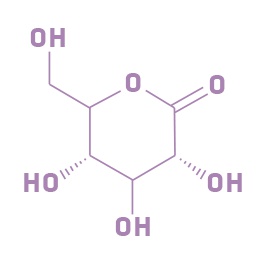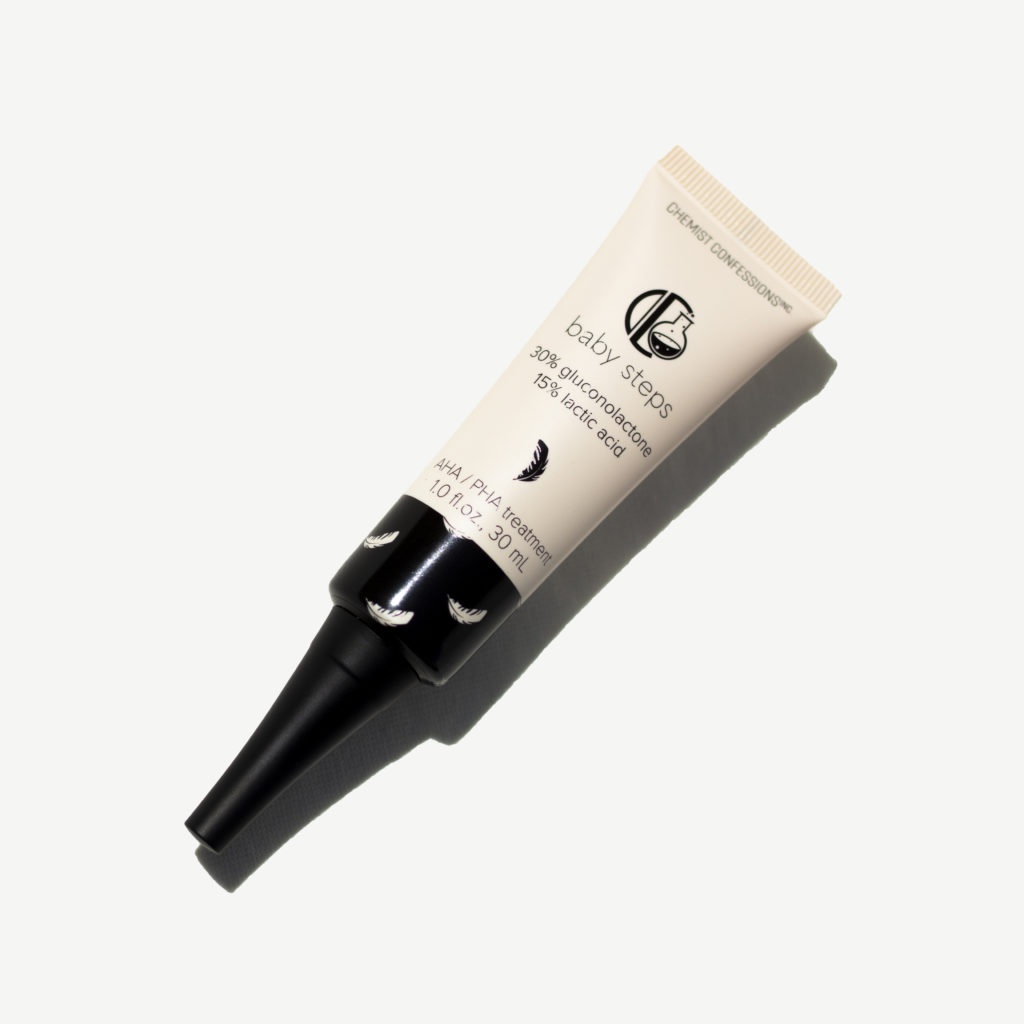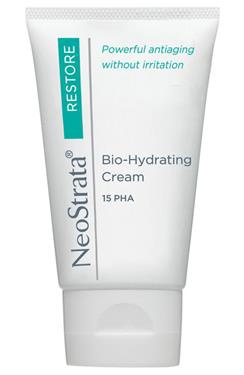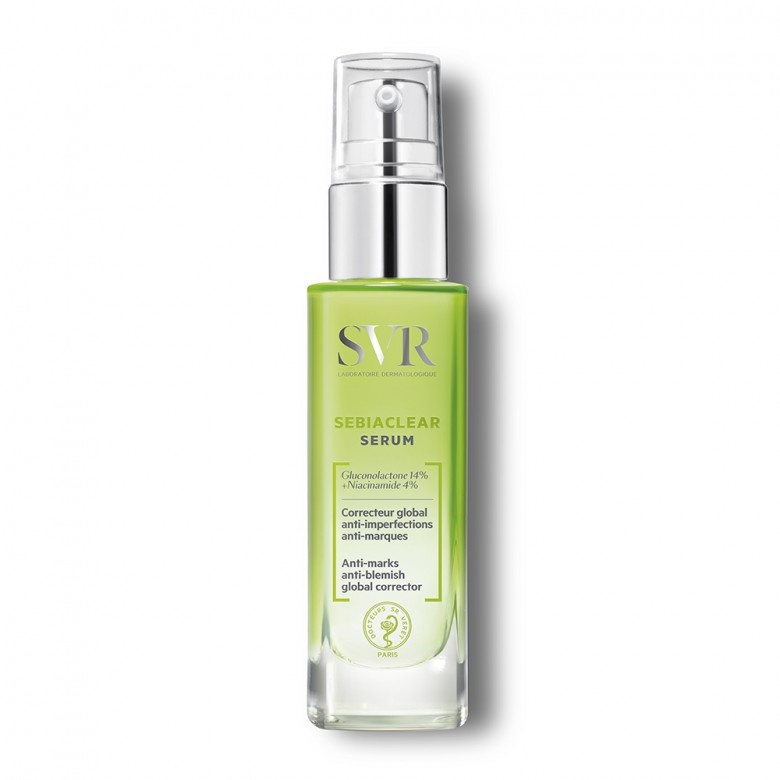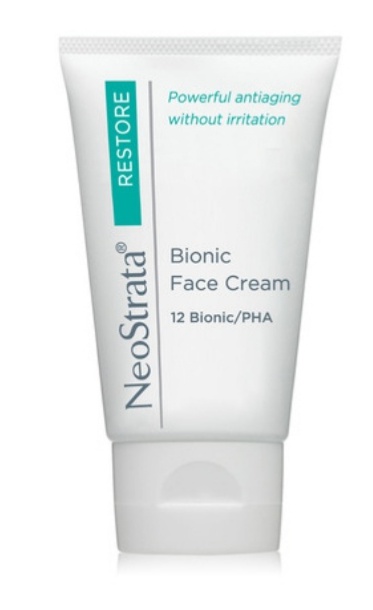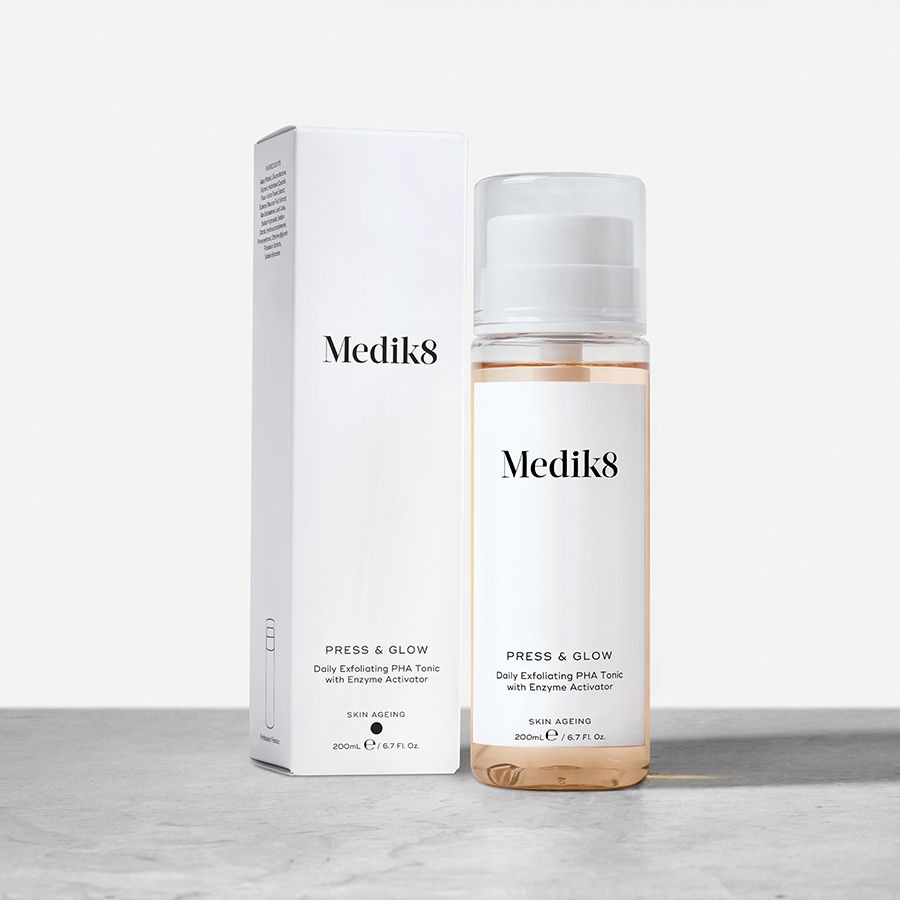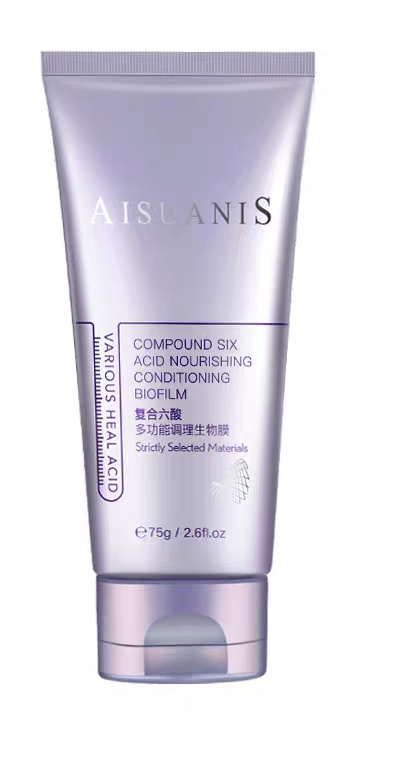Quick Facts
- It’s a polyhydroxy acid (PHA), that is often referred to as next generation AHA
- It gently lifts off dead skin cells form the skin surface making skin smooth and even
- In the long term it provides anti-aging benefits, like increased skin thickness and decreased wrinkles (though a tad less than even more proven superstar AHAs)
- It’s a great moisturizer and even helps to repair impaired skin barrier
- It’s antioxidant, and does not make your skin more sensitive to the sun
- It can be used even if your skin is very sensitive, rosacea prone or if you are post cosmetic procedure
Geeky Details
Gluconolactone is kind of an acid, even though you would probably not guess it from its name. It’s a PHA, or polyhydroxy acid. PHAs are close relatives to the famous AHAs, both in terms of similar chemical structure and similar effects on the skin. They are often marketed as new-generation AHAs. So if AHAs do not tell you anything, you can read all about them here. Go and read. We tell you, it’s worth the time.
So the main promise of gluconolactone (and also its brother, the other most often used PHA, lactobionic acid) is that it has comparable awesome skin benefits to AHAs but without the irritation as a side effect. Sounds great, right?
There was a study done in 2004 that compared a PHA skincare regimen and an AHA skincare regimen for 12 weeks focusing on irritation and anti-aging benefits. The result? PHAs scored much better at irritation, stinging and burning (and much better means of course much less), and they scored very similar for anti-aging, skin-smoothing effects. There were only two aspects where the AHAs scored a bit better: pinch recoil and skin sallowness.
Being gentle on the skin probably comes from the larger molecular size, that means less penetration and less irritation. In fact PHAs are so gentle that you can even use them if your skin is very sensitive (even if you have rosacea or atopic dermatitis) and they are also suggested post cosmetic procedure to prolong and enhance the skincare benefits.
Another area where PHAs excel is skin moisturization. They are better at that than AHAs and can help to repair the skin barrier. They are also shown to work successfully together and enhance the benefits of other actives, including azelaic acid for rosacea or hydroquinone for hyperpigmentation.
And that’s still not all. Gluconolactone also has antioxidant and chelating properties, which means that it can prevent oxidation of easily oxidised other things. Actually, it’s antioxidant effect is comparable to famous Vit C (though to be fair Vit C is awesome but not a particularly strong antioxidant in itself).
And one more super interesting study result: as opposed to AHAs that increase sun sensitivity, gluconolactone was shown not to do that. Not that we want to tell you not to use sunscreen if you use a gluconolactone exfoliant (please always use sunscreen!), but we thought this is interesting.
Bottom line: Gluconolactone is a superstar and especially if your skin is sensitive it’s a must try. It will smooth your skin, even out the skin tone and even give anti-aging benefits and all this without irritation. Yep, must try.
Show me some proof
- Cutis., 2004 Feb;73(2 Suppl):14-7., A polyhydroxy acid skin care regimen provides antiaging effects comparable to an alpha-hydroxyacid regimen.
- Cutis.,2004 Feb;73(2 Suppl):3-13., The use of polyhydroxy acids (PHAs) in photoaged skin.
- Journal of Cosmetic Dermatology, , Volume 5 (1) – Mar 1, 2006, An evaluation of a polyhydroxy acid skin care regimen in combination with azelaic acid 15% gel in rosacea patients
- Dermatologic Surgery, , Volume 30 (2) – Feb 1, 2004, The Polyhydroxy Acid Gluconolactone Protects Against Ultraviolet Radiation in an In Vitro Model of Cutaneous Photoaging
- Journal of Cosmetic Dermatology, , Volume 4 (1) – Jan 1, 2005, After 30 years … the future of hydroxyacids
- Hunt, Michelle J., and Ross StC Barnetson. "A comparative study of gluconolactone versus benzoyl peroxide in the treatment of acne." Australasian journal of dermatology 33.3 (1992): 131-134.






